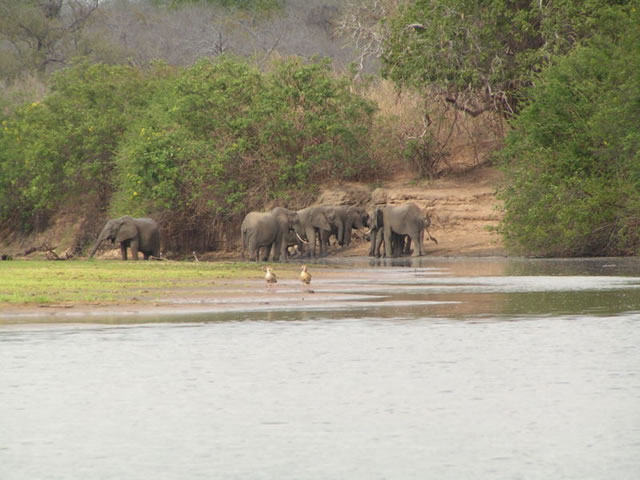The World Heritage Committee of UNESCO has warned the Tanzanian government against mining for uranium and conducting oil exploration in the region known as the Selous Game Reserve. This came in response to Natural Resources and Tourism minister Ezekiel Maige announcing that about 34,532 hectares of land was to be used for a $400 million uranium mine.
 Elephants in the Selous Game Reserve. Image Credit: Wikipedia
Elephants in the Selous Game Reserve. Image Credit: Wikipedia
The land which lies in the 54,600 km² (21,081 square miles) of the world heritage game reserve is just 0.69% of the total area. The Selous Game Reserve is the second largest wildlife sanctuary in Africa. The area is also rich in minerals. Within the reserve no permanent human habitation or permanent structures are permitted. All (human) entry and exit is carefully controlled by the Wildlife Division of the Tanzanian Ministry of Natural Resources and Tourism. Some of the typical animals of the savanna (for example elephants, hippopotami, African Wild Dog, cape buffalo and crocodiles) can be found in this park in larger numbers than in any other African game reserve or national park.
Tony Devlin, country manager of Mantra Resources said that exploration and drilling works have confirmed the presence of large deposits of uranium in the area. If the uranium mine planned by the Australian mining company came into existence, the company would earn $200 million annually and from that $5 million would come to the Tanzanian treasury in form of royalty payments.
Mr William Ngeleja, the Minister for Energy and Minerals said that the mining was scheduled to begin in 2012. He added that the Tanzanian government has sought approval from the UN World Heritage Body for allowing the mine. Extraction of the minerals within the heritage sites requires approval of two-thirds of the 21 World Heritage Committee members.